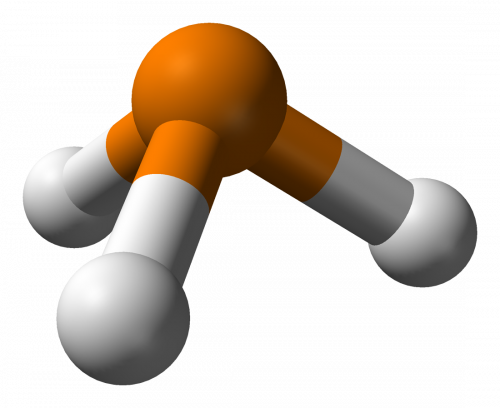Image courtesy of Wikimedia Commons.
Aliens stink—or, at least, there is a strong chance they do.
Researchers in Sara Seager’s lab at the Massachusetts Institute of Technology (MIT) have been looking into biosignature gases––volatile substances produced by life––as a potential way to identify life on another planet. Lead researcher Clara Sousa-Silva has been researching phosphine––a gas known for its odor––for quite a while, trying to figure out why it exists on Jupiter and Saturn. “This gas is so simple and important, yet it is difficult to detect it anywhere, particularly on Earth. This really showed a gap in our knowledge of biosignature gases—life appears to make so many gases that we do not understand,” Sousa-Silva said.
The team initially drew upon previous research to determine if phosphine is a good biosignature gas. They concluded that it is most likely produced directly by anaerobic bacteria from environmental phosphorus, as it has been detected in a variety of anoxic ecosystems, including above penguin companies and bird guano, as well as in bacterial cultures in laboratory experiments.
According to Sousa-Silva, good biosignature gases have low or no false positives. “Low false positives for life means that there is close to zero chance the substance could be made by non-life processes like volcanism and lightning,” Sousa-Silva said. To rule out such false positives, the team made sure to take those phosphine-producing phenomena into account.
The group started developing methods to assess the detectability of phosphine in two different rocky planet scenarios: large hydrogen-dominated planets and carbon dioxide-dominated planets, with ten percent nitrogen and ninety percent hydrogen gas/carbon dioxide respectively.
Perhaps the most difficult part of this experimental process was realizing when to stop. “Knowing I had to stop at some point, without having tried a certain planet type or different variations for killing phosphine or possible reactions, was the most difficult,” Sousa-Silva said. However, Sousa-Silva and the rest of the team understood that testing all the possibilities would be nearly impossible. Instead, they employed a combination of sensitivity analysis and simulations of spectroscopic models to pinpoint the most important factors to take into consideration.
Simulated transmission spectroscopy, one of the techniques employed, is a process in which the team simulates the light passing through the atmosphere and absorbed selectively by different molecules based on their wavelength. Phosphine, like many other molecules, absorbs only very specific wavelengths of light. This information gathered from the simulation enables researchers to unambiguously detect a molecule based on what color of light is missing. An additional technique used was sensitivity analysis, a test of how much a particular factor—if set to an extreme value—would affect the results. This combination assisted them in choosing their planetary scenarios wisely. Main components included the composition of the air and stellar radiation—how much and in what direction radiation hits a planet, as different radiation angles can destroy different molecules.
Seager, the principal investigator overseeing this project, hopes that this research will help better prepare astrobiologists to look for anything and everything. “We want to provide a menu of options when it comes to finding another planet that might show signs of life, reaching beyond oxygen and water,” Seager said.

